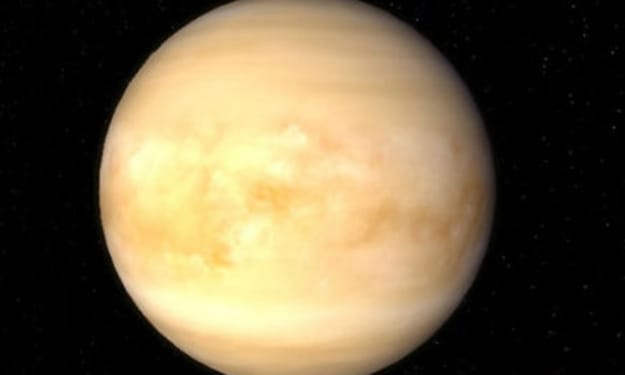
West Virginia has a bad reputation, brought on by Hollywood and the media portraying it as backwoods and at times an uncivilized place. In reality, West Virginia is full of amazing things and rich history everywhere you go. There are urban and rural areas, universities, mountains, valleys, rivers, and so much more. Even more interesting, West Virginia has some wild “firsts” that occurred there, and you’d be surprised at some of them.
1) Mother’s Day
Anna Jarvis was a woman living in Grafton, WV, from the late 19th century through the early 20th century who dearly loved her mother and had a great relationship. When Anna was about 12 years old, her mother was teaching Sunday School classes at their church when her mother said something that stuck in Anna’s mind for the rest of her life: it would be nice if there was a holiday that celebrated mothers and all they do.
As her mother aged, Anna moved back home to help care for her as her heart condition worsened. Not long after, Anna’s mother passed in 1905 and Anna’s devotion to Mother’s Day began. Anna wrote to any and everyone she could think of, from local friends to the President, tailoring each letter to appeal more to its reader. In 1906, Anna managed to get small local celebrations organized in Grafton but continued sending her letters. Sometime in 1907, Anna sent a letter to John Wanamaker, a wealthy merchant from Philadelphia, who helped champion her dream of creating this new holiday.
Finally, on May 10, 1908, the very first official Mother’s Day celebration was held in Grafton. By this time, the celebrations had been spreading to other states, and by 1912 were celebrated in some form in every state. Finally, in 1914, Congress and Woodrow Wilson made Mother’s Day an official national holiday.
Anna discovered that the downside of creating a new holiday is the different industries that will try to cut in for profit. By 1923, Anna was boycotting the floral, confection, and gift card industries for their attempts to take advantage of this new selling point. She even crashed their conventions on more than one occasion, getting herself arrested in 1925.
2) 4-H Camp
While the 4-H Club was not specifically invented in West Virginia, Jackson’s Mill was the nation’s first 4-H Camp for its use. The 4-H movement began around 1902 in Clark County, Ohio, and not long after showed up in Illinois. Rural youth groups were being developed to provide more agricultural education for the betterment of farming families, teaching the kids new or improved methods of farming, homemaking, canning, and more.
In 1914, a breakthrough for the development of 4-H happened: Congress passed the Smith-Lever Act, granting federal funding to states’ agricultural programs. Once this was passed, West Virginia quickly dove into the club’s development. By 1915, the first camp for rural youths in the US was organized in Randolph County, sponsored by West Virginia University’s Extension Services. By 1918, the club’s name and logo were developed and in use. It wasn’t until 1921 that the Jackson’s Mill 4-H Camp was created, becoming the nation’s first state-run 4-H camp location.
Jackson’s Mill is still running as a nationally recognized 4-H Camp and conference center. In addition, they also have historical areas that predate West Virginia, a blacksmith, cabins and other places to stay, buffet dining, meeting rooms, a plethora of youth programs, and so much more.
3) First Land Battle of the Civil War
Before getting started here, let’s clarify something: the Civil War’s first organized land battle occurred in 1861. However, West Virginia was not officially its state until 1863. So while the battle occurred in what is now West Virginia, understand that at the time it was still technically Virginia.
In June of 1861 more than 1600 Union soldiers from the west and 1400 from the north marched down towards Philippi in Barbour County. The plan was for both regiments to meet in Philippi and converge on the unsuspecting Confederate soldiers upon the signal of a single pistol shot.
In the early morning hours of June 3rd, a couple of Union soldiers stumbled across a Confederate sympathizer and began to harass him. The man’s mother appeared and quickly ran into their house, returning to brandish a pistol at the soldiers. She fired a single shot from the pistol, attempting to scare the men away from her son.
Rather than repel these few Union soldiers, this unsuspecting mother had just sent the signal to unleash over 3000 soldiers, who descended upon the ill-prepared Confederates and forced their retreat, and handed the Union their first victory. The Union only lost 4 men in the Battle of Philippi, while the Confederates lost 26. This battle also caused the first field amputations of the Civil War, which brings us to an interesting bonus.
A Confederate man named James Hangar found himself being one of the men needing these first field amputations, losing a leg in battle. He was unsatisfied with the lack of good prosthetics, so created one for himself. This prosthetic leg worked so well, that he later patented the design. Eventually, the Hangar Orthopedic Group was born and is still a market leader in the manufacture of prosthetic limbs to this day.
4) Brick Roads in the US
In 1870, the US still only had dirt roads. In drier areas, it wasn’t too much of an inconvenience. In places like West Virginia, however, the frequent rains made for miserable travel. The clay dirt would absorb the water, becoming thick and adhesive. The clay mud would stick to absolutely everything, including itself, resulting in large clumps forming wherever the clay could make contact. Carts, horses, and anyone walking would become unstable as the clay glue built up on shoes and wheels.
Mordicai Levi, Sr., was a multi-faceted man in Charleston, WV, and was tired of this whole ordeal. He got together with his business partner, Dr. John Hale, to come up with a solution. Brick roads were nothing new of course but were cumbersome to lay and could be expensive. The pair went to the city council to get their road, Summers Street, paved. Unfortunately, no one on the board wanted to pay for or deal with it, so the pair were swiftly denied. Levi went back to the drawing board and figured out a way to improve the process of laying brick roads by changing how the boards were laid out underneath the sand and bricks, making for easier and more reliable work.
Again, the men were rejected by the board, but Dr. Hale had a proposition for them: allow Levi and Hale to build their road, only on their block, and with their new way, and in return, Dr. Hale would incur all expenses. It was a win-win; the men would have their paved road, be able to test out their new system, and the city would not have to pay for it. By 1873, the entire block had been paved with Levi’s new method, and the men moved on to new challenges. The men got together and built Charleston’s first Capitol building, and later made history with the Hale House. Dr. Hale wanted this grand building completed as quickly as possible, but every contractor he spoke with gave him unsatisfactory estimates. Finally, Levi got the house built in 91 days, cutting all estimates by half or more.
Levi settled in at the Charleston Water Works facility, where he served as superintendent. Here is where he created, built, and installed the Levi High-Pressure filter that improved the quality of water received by their customers and influenced later versions.
5) Public Spa
Berkeley Springs in the eastern panhandle of West Virginia is considered the very first spa open to the public in US history. The natural warm springs that flow at a near-constant 74°F and stone pools all surrounded by mountains were originally used to treat several ailments by Native Americans for generations before the arrival of Europeans to the area. A Roman bathhouse-styled building with nine rooms was erected in 1815 over the natural pools, modernizing it with fixtures and plumbing. A theater was also built for additional entertainment.
In 1747, the area was first mentioned by settlers who dubbed it “Medicine Springs.” The area was noted in a map made by none other than Thomas Jefferson’s father, Peter Jefferson. The map caught the attention of Lord Fairfax, who sent a then-sixteen-year-old George Washington to survey the land for him. Washington came to love the area so much that he continued to return for vacations in the 1760s. After meeting his future wife Mary, he brought her to the springs to court her. Then, in 1776, Washington drew up a batch of 134 lots, drew out and named the streets, incorporated the town, and named it Bath.
Berkeley Springs, WV, is an amazing place to visit. They have retained much of their historic culture and offer everything from spa services to history lessons to a variety of outdoor activities. A castle looms over, and the nation’s smallest state park is, in fact, Berkeley Springs.
About the Creator
Enjoyed the story? Support the Creator.
Subscribe for free to receive all their stories in your feed. You could also pledge your support or give them a one-off tip, letting them know you appreciate their work.





Comments
There are no comments for this story
Be the first to respond and start the conversation.